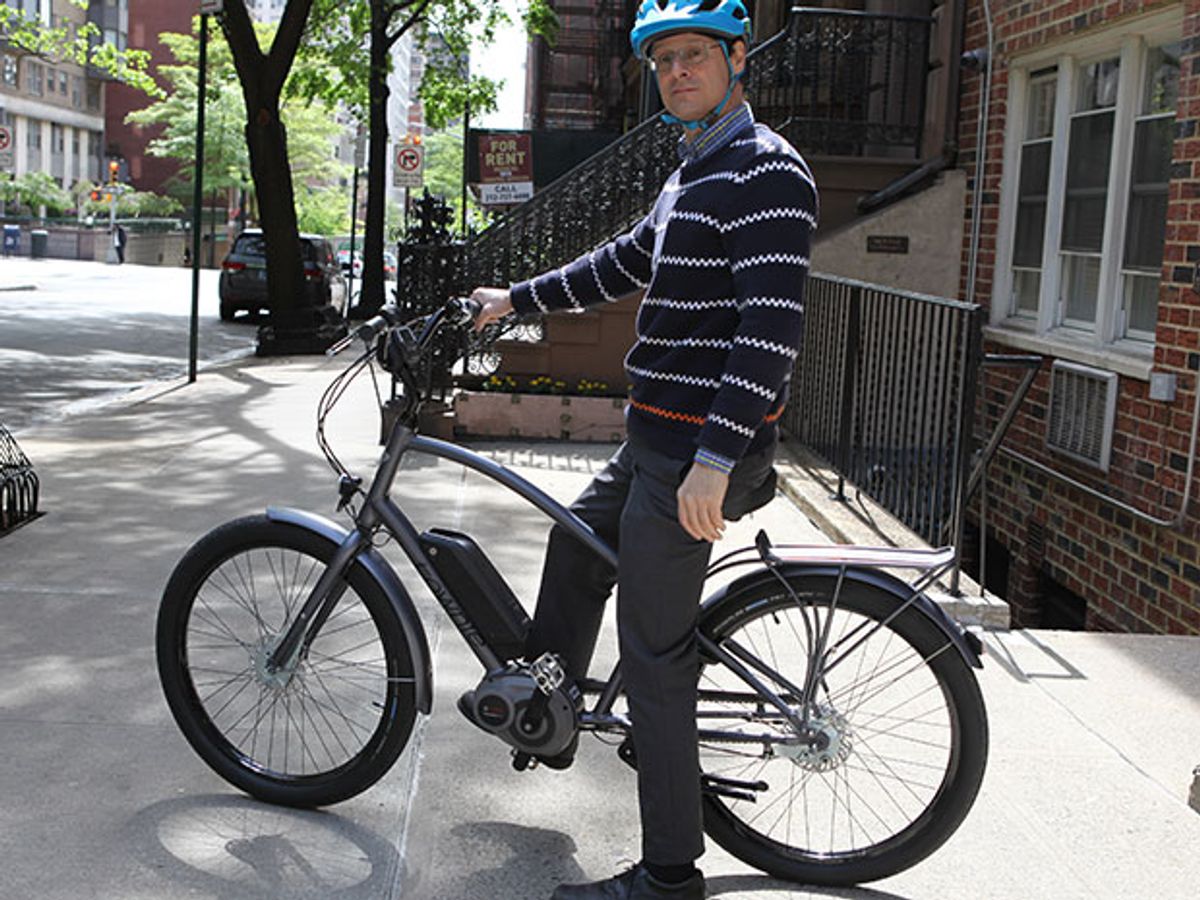Riding an electric-assisted bicycle gives me a whole new perspective on Manhattan. For one thing, IEEE Spectrum’s office on Park Avenue suddenly seems awfully close to the East River. I hadn’t visited it in a decade.
For another, it makes me feel like Superman. My Scott-made, Bosch-electrified Scott Sub Evo 10 bike does nothing on its own, it only amplifies my own effort, and when I put it on “Turbo,” the highest level, I shoot forward like Lance Armstrong on steroids. As it were.
And by they way, electric-assist bike technology can now be shrunk so deeply into the frame of a bike that it can perform “motor doping” that’s detectable only with special thermal cameras. Racing results may already have been perverted.
What’s the demographic for this US $4000-odd machine, I ask. “Mostly people over 50,” says Jonathan Weinert, Bosch’s sales manager here. “And for people who live in hilly places and don’t want to get to work covered in sweat.”
Bosch has been selling e-assisted bikes in the United States for about two years, Weinert says, as he threads us through the traffic on a similarly enhanced Electric Townie Go! Such enhanced bikes still make up just a percent or two of all new sales though, while in Europe—where they’ve been around longer—they’re sweeping everything before them.
E-assist models have surged to about a quarter of all bike sales in the Netherlands, for instance, even as sales of pure pedal-powered machines has declined. Same goes for Germany, the largest single market.

Bosch—a huge supplier to the auto industry—is one of many players in the e-assist bike market. Chinese companies are heavily involved, too. There’s even a high end, with prices reaching sports-car levels.
Weinert, who trained as a mechanical engineer before veering into management and transportation policy (in which he has a Ph.D. ), steers into traffic. I gamely follow in “Eco,” the lowest power-assist level (lowest above zero, that is). I’m a bit cautious as it’s my first time biking in the street in 20 years and my first time in actual traffic in rather longer.
Okay, in 42 years. Yep, I'm the intended demographic.
“The motor is coaxial” with the pedals, he tells me. (That arrangment centers the weight better than the GeoOrbital bike adapter I wrote about recently. GeoOrbital switches out the front wheel of a conventional bike to give it e-oomph, but the weight up front makes steering a little tricky.)
“Because it’s only pedal assist, never pure electric power, it’s legal in New York City,” Weinert adds.
Minutes later a guy on one of the illegal sorts zip past. In these parts, such laws are mostly in the way of a suggestion.
The lithium-ion battery pack recharges in a few hours, and it can take you well over 80 kilometers (50 miles), though of course the exact range depends on conditions and on your own effort. All the e-assist equipment—the motor, the control unit, the sensors—comes to around 7 kilograms (15 lbs), bringing the total bike weight to around three times that much. The sensors attend to the force of your pedaling, the wheel’s turning rate and other matters, sampling the data at 1,000 times a second.
We get to a parking lot near the river and I’m free to go full turbo. In the short distance available I can go about as fast as I’ve ever been on a bike—on level ground. I dimly remember going down a particularly scary hill long, long ago, when I was young and foolish.
Speaking of foolish, I try Turbo when I’m back in the thick of traffic, but this time I just nudge those pedals along. Yes, I’m quick off the mark. A minute or two later, Weinert takes me back onto the sidewalk.
I’d signed a disclaimer form, but there’s no point in my testing the law behind that document. This is New York City, the most lawyered-up place in the world.
Philip E. Ross is a senior editor at IEEE Spectrum. His interests include transportation, energy storage, AI, and the economic aspects of technology. He has a master's degree in international affairs from Columbia University and another, in journalism, from the University of Michigan.



